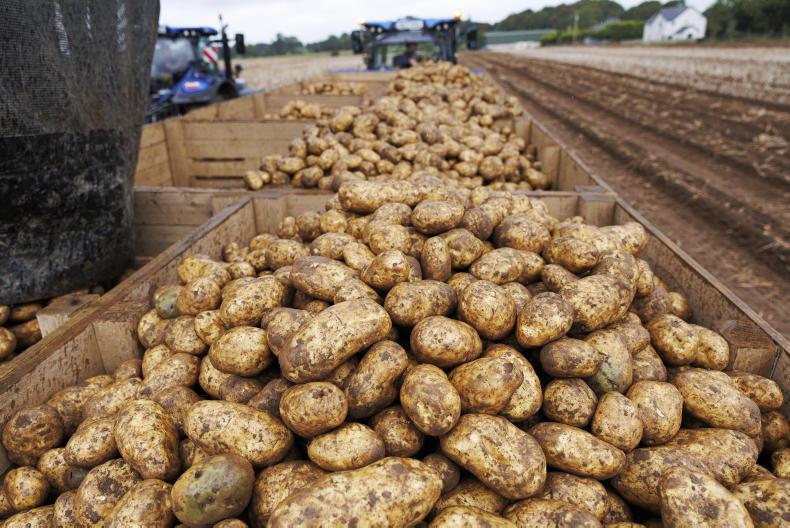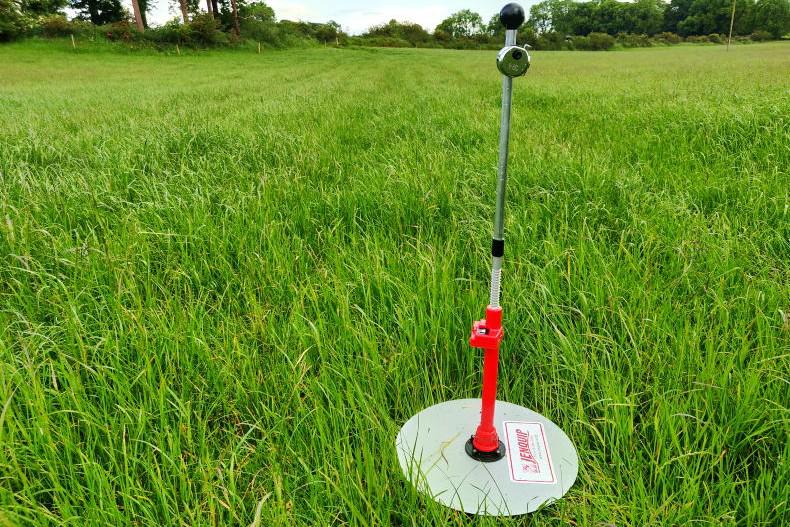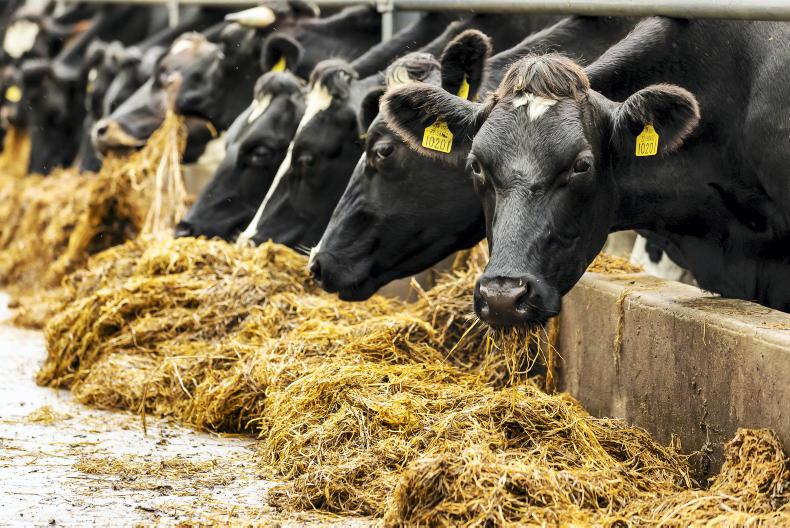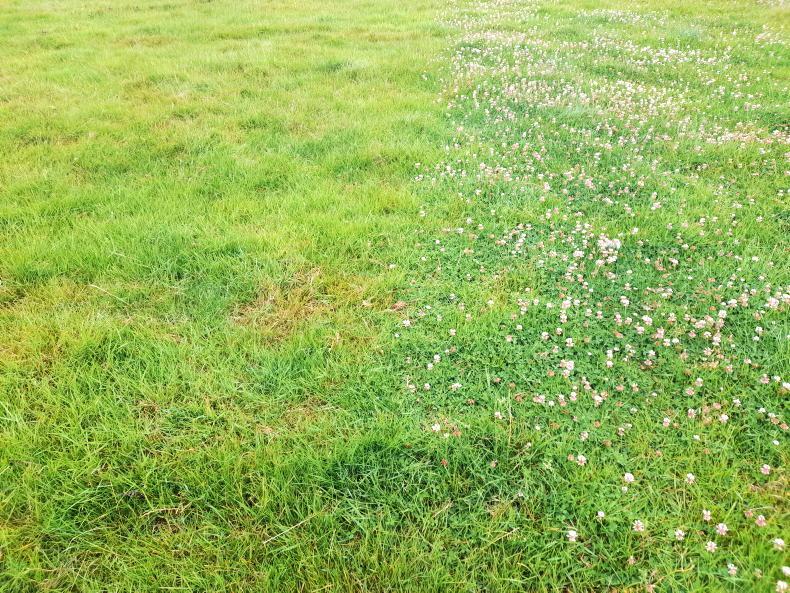Fearga red clover, the first commercially bred red clover variety in Ireland, is now on sale and available for purchase.
The variety was bred by Teagasc in Oak Park and is being distributed by Goldcrop.
Based on results from the red clover variety trials in England and Wales, Fearga performed better than the mean of the recommended varieties for yield, with exceptionally good performance in the third harvest year, recording yields 9% higher than the mean of the other varieties.
The popularity of red clover in silage swards has shot up in recent years since the price of fertiliser increased and the chemical N allowances decreased. With many of these crops in the ground two or three years at this stage, some important lessons are beginning to emerge.
The number one take-away is that success with red clover isn’t guaranteed and there is a lot that could go wrong or limit performance.
Some good farmers who have banked on red clover to deliver have been disappointed. Equally, others have been very satisfied with it but there is an element of uncertainty with it.
The number one rule is good soil fertility followed by eliminating over-grazing/tight cutting and compaction. Compaction is a particular problem on headlands and this can dramatically limit the production from the field as a whole.
Most of this compaction seems to occur when slurry is going into the field and silage is being harvested. I have seen fields where there is literally no red clover left on the headlands, which begs the question if these areas should be sown with red clover at all and if white clover and perennial ryegrass plus conventional N rates would be better on headlands?
Clover is a Mediterranean plant and as such probably prefers drier growing conditions compared to a typical wet summer in Ireland. Certainly, the wet back-end to 2023 was not ideal for red clover in terms of growing and particularly for harvesting, given its lower dry matter and longer wilt requirement than ryegrass.
In terms of varieties, there is more limited information on what varieties are most suited to Irish conditions as there is no recommended list for red clover in Ireland, compared to perennial ryegrass or white clover.
However, red clover is being tested on the recommended lists trials in Britain and the three most commonly grown red clover varieties, Aberclaret, Milvus and Fearga, are all on the recommended lists for both England and Wales and Scotland.
In a Teagasc survey of farmers who experienced bloat in 2023, a disproportionate number of responders said that there was red clover in the swards the cows were grazing when the bloat event occurred.
The inclusion of red clover in with white clover when reseeding grazing fields is a trend that has emerged over the last two years. Red clover is faster growing than white clover and provides good clover content, even in the first season. It also fixes more nitrogen than white clover and some say it fixes it straight away, although others dispute this.
Either way, clover contents can become very high in the first year of a reseed when both red and white clover are sown together.
Combined with low dry matter, low fibre levels and high digestibility of the ryegrass means that the risk of bloat is elevated and preventative actions should be taken.
These include buffer feeding some long fibre, including bloat oil in the water and using strip wires.
Fearga red clover, an Irish-bred variety is now commercially available in Ireland. It joins Aberclaret and Milvus as commercially available varieties that are on the UK recommended lists. Compaction has been noted as a big problem for red clover and some farmers are noting complete wipe-out of red clover in parts of the field that are compacted. Red and white clover in grazing mixtures increases the risk of autumn bloat.
Fearga red clover, the first commercially bred red clover variety in Ireland, is now on sale and available for purchase.
The variety was bred by Teagasc in Oak Park and is being distributed by Goldcrop.
Based on results from the red clover variety trials in England and Wales, Fearga performed better than the mean of the recommended varieties for yield, with exceptionally good performance in the third harvest year, recording yields 9% higher than the mean of the other varieties.
The popularity of red clover in silage swards has shot up in recent years since the price of fertiliser increased and the chemical N allowances decreased. With many of these crops in the ground two or three years at this stage, some important lessons are beginning to emerge.
The number one take-away is that success with red clover isn’t guaranteed and there is a lot that could go wrong or limit performance.
Some good farmers who have banked on red clover to deliver have been disappointed. Equally, others have been very satisfied with it but there is an element of uncertainty with it.
The number one rule is good soil fertility followed by eliminating over-grazing/tight cutting and compaction. Compaction is a particular problem on headlands and this can dramatically limit the production from the field as a whole.
Most of this compaction seems to occur when slurry is going into the field and silage is being harvested. I have seen fields where there is literally no red clover left on the headlands, which begs the question if these areas should be sown with red clover at all and if white clover and perennial ryegrass plus conventional N rates would be better on headlands?
Clover is a Mediterranean plant and as such probably prefers drier growing conditions compared to a typical wet summer in Ireland. Certainly, the wet back-end to 2023 was not ideal for red clover in terms of growing and particularly for harvesting, given its lower dry matter and longer wilt requirement than ryegrass.
In terms of varieties, there is more limited information on what varieties are most suited to Irish conditions as there is no recommended list for red clover in Ireland, compared to perennial ryegrass or white clover.
However, red clover is being tested on the recommended lists trials in Britain and the three most commonly grown red clover varieties, Aberclaret, Milvus and Fearga, are all on the recommended lists for both England and Wales and Scotland.
In a Teagasc survey of farmers who experienced bloat in 2023, a disproportionate number of responders said that there was red clover in the swards the cows were grazing when the bloat event occurred.
The inclusion of red clover in with white clover when reseeding grazing fields is a trend that has emerged over the last two years. Red clover is faster growing than white clover and provides good clover content, even in the first season. It also fixes more nitrogen than white clover and some say it fixes it straight away, although others dispute this.
Either way, clover contents can become very high in the first year of a reseed when both red and white clover are sown together.
Combined with low dry matter, low fibre levels and high digestibility of the ryegrass means that the risk of bloat is elevated and preventative actions should be taken.
These include buffer feeding some long fibre, including bloat oil in the water and using strip wires.
Fearga red clover, an Irish-bred variety is now commercially available in Ireland. It joins Aberclaret and Milvus as commercially available varieties that are on the UK recommended lists. Compaction has been noted as a big problem for red clover and some farmers are noting complete wipe-out of red clover in parts of the field that are compacted. Red and white clover in grazing mixtures increases the risk of autumn bloat. 








SHARING OPTIONS